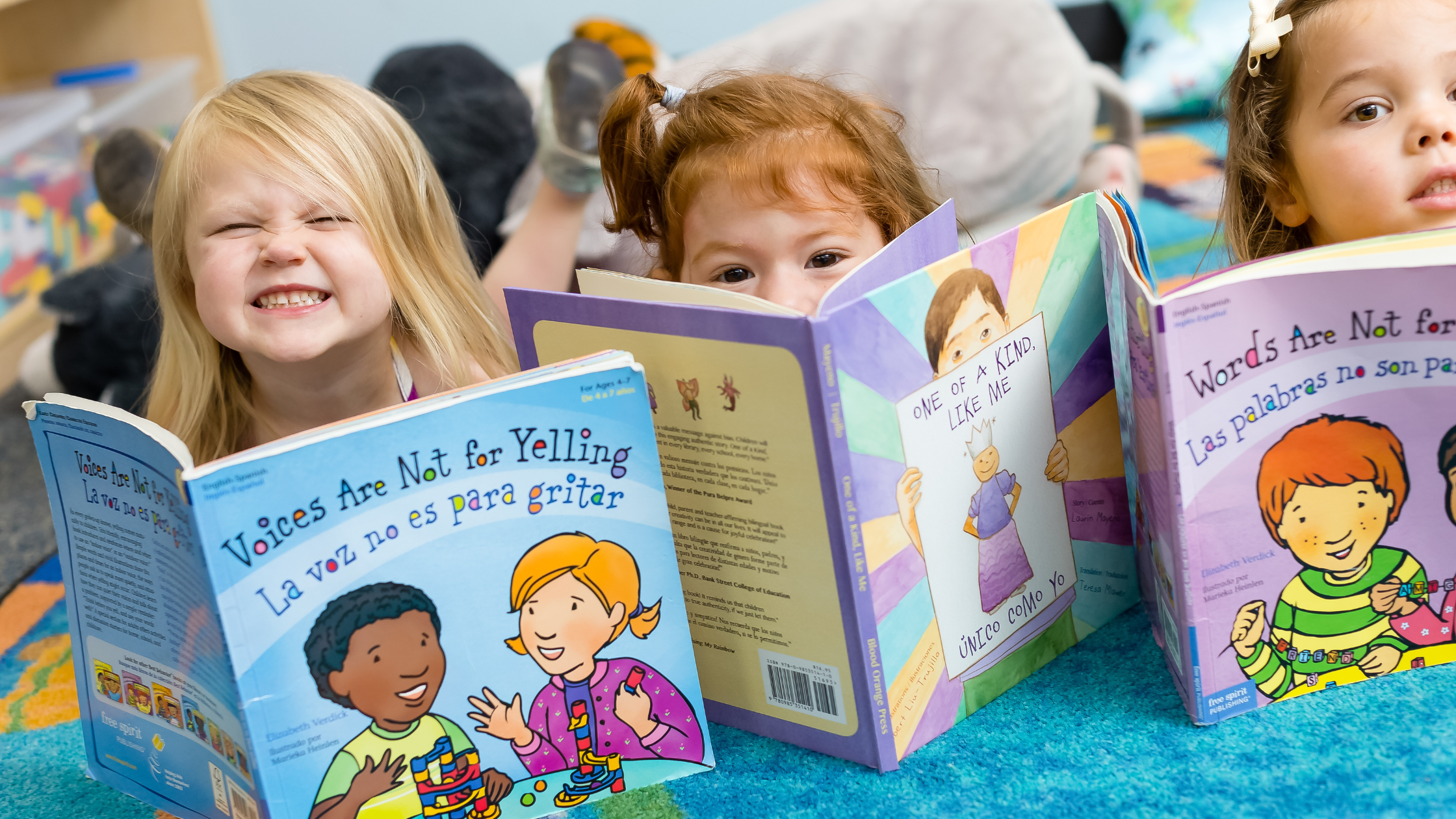From First Words to Fluency: A Parent’s Guide to Language Development from Infant to Pre-K

Choosing Spanish immersion early education is an exciting step toward raising confident, curious global citizens—and the enthusiasm for bilingual programs is growing everywhere! From the thrill of first words to full phases and comprehension, your child’s journey in Spanish immersion is filled with meaningful milestones. For families pursuing this path, embracing bilingualism together, understanding key milestones, and supporting Spanish language growth make the experience all the more rewarding.
Language Development Milestones by Age
Infants (6 weeks – 12 months)
Bilingual babies follow the same early language milestones as monolingual children, starting with cooing, babbling, and experimenting with sounds. Around their first birthday, many begin saying their first words, such as leche (milk), agua (water), or más (more). At Tierra Encantada, babies learning sign language often start using signs like “milk” and “more”, building strong early communication skills. Remember, every child’s pace is unique, so first words may come sooner or later—that’s perfectly natural in any child’s journey!
Toddlers (1-3 years)
Between ages 1 and 3, you’ll notice vocabulary expanding quickly, with toddlers using both languages fairly equally. Colors and shapes—like estrella (star) and corazón (heart)—are often some of the first concepts they express. By age 2, they may start stringing together two-word phrases, like “mamá ayuda” (mom help). By their third birthday, you’ll start hearing three-word sentences, often mixing both languages as they explore syntax.
Preschoolers (3-4 years)
In preschool, bilingual children become more conversational. They’ll start forming full sentences, requesting things, and engaging in play in both languages. Conversations with peers and teachers become more complex, and you’ll hear an increasing number of sentences in Spanish. This is also the age where they start using Spanish beyond just vocabulary—applying language to talk about their world.
Pre-K (4-5 years)
By Pre-K, bilingual children engage in fluent, whole-group discussions and are able to express their needs and ideas in full conversations in Spanish. They’re not only learning the language but also using it to understand concepts, a crucial step in achieving full fluency. This immersive learning sets the foundation for a lifetime of bilingualism.
Common Trends and What to Expect in Bilingual Children
Language Mixing and Code-Switching
Switching between languages in the same sentence or conversation? Totally normal! This code-switching helps kids build cognitive flexibility and deepen their grasp of both languages.
Vocabulary in Two Languages
A bilingual child might know some words in Spanish but not in English or vice versa. For a fuller picture, look at their combined vocabulary across both languages.
Unique Timelines
Bilingual kids develop language skills at their own speed. Some start speaking fluently early on; others take a bit more time. As long as they’re making progress in both languages, they’re right on track!
FAQs for Parents: Navigating Bilingualism and Immersive Learning
Q: Will raising my child bilingually cause confusion or delay their speech?
No! Research shows that bilingualism doesn’t cause confusion or delays. Bilingual children often reach milestones around the same time as monolingual children, though they may take a bit longer to master complex grammar structures as they’re processing two systems at once.
Q: Should we speak both languages at home, or will that slow my child’s language development?
It’s great to expose your child to both languages! Studies confirm that bilingualism boosts cognitive abilities, problem-solving skills, and even social connections. Many families find it helpful to adopt strategies like “one parent, one language” or designating specific times for each language to ensure balanced exposure.
Q: Is bilingualism possible for children with learning disabilities?
Yes! Children with learning disabilities, including autism, Down syndrome, or language disorders, can learn two languages. Research suggests that bilingualism doesn’t interfere with their cognitive abilities or development and can even offer additional social and cultural benefits.
Tips to Nurture a Bilingual Environment
- Incorporate Music and Media
Music is a fantastic way to reinforce language. Try a Spanish playlist on Spotify, watch educational videos in Spanish, and play games that teach vocabulary in a fun way. Engaging with the language through music and stories makes learning enjoyable and helps with retention.
- Practice Language Immersion
Visit places where Spanish is spoken, such as cultural centers or restaurants, to give your child real-world exposure. If travel is feasible, spending time in Spanish-speaking countries can be a profound language and cultural learning experience. - Monthly Vocabulary Themes
To reinforce their learning, try focusing on a few new Spanish words each month and using them in daily conversations. Check out our blog for monthly vocabulary ideas to learn some of the words your little ones are learning at school! - Read and Speak Together Daily
Consistent, casual conversations and reading time in both languages enrich vocabulary and help children distinguish the two languages. From nursery rhymes to bedtime stories, you can introduce a variety of words and structures in both languages.
By embracing both languages at home, encouraging engagement with Spanish through daily life, and celebrating each milestone, you’re giving your child the gift of a bilingual brain and a world of possibilities. Keep up the great work—your child’s journey from first words to fluency is one worth celebrating!




